Pruning apricot in spring
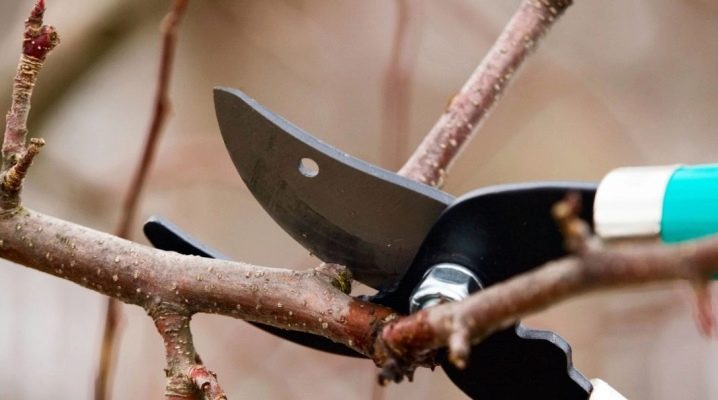
Apricot trees are fast growing and have a lot of shoots. The crown of the tree grows overgrown and the yield decreases. The tree grows old quickly, and the branches in the center of the crown become bald and stop bearing fruit. Therefore, the apricot requires annual pruning and formation of the correct crown.

When is it needed?
Pruning apricots in spring will increase yields, rejuvenate and heal the tree. According to experienced gardeners, it is best to prune stone fruit crops in the spring. Pruning in the fall can weaken the tree, it will be less frost-resistant and can get sick. The sections on the branches will not have time to tighten, fungal spores or other bacteria will penetrate through them. Unhealed cuts will freeze in winter, the tree will ache, and may not yield a harvest.
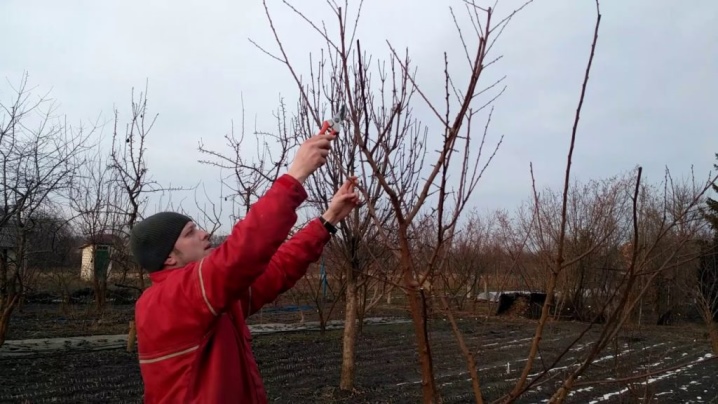
Given that the apricot retains all its ovaries, the tree must be pruned every year. Pruning is carried out in early spring, before bud formation. The approximate timing of spring pruning: late March - early April, in different regions, the timing may be shifted by about a month. Main conditions: the air temperature is already above zero, but the period of sap flow has not yet begun for the tree. The less time elapses between pruning and bud formation, the better.
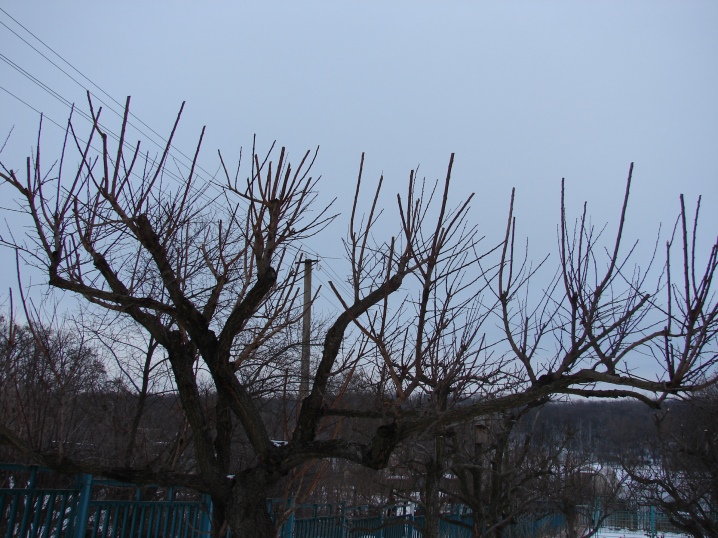
With the beginning of sap flow, the tree's immunity increases, which means that pathogens, pests and fungal bacteria have no chance to get into the internal system of the tree.
In the spring, it is necessary to remove damaged and frozen branches and shoots. Otherwise, the tree will waste energy and nutrients to restore them. The lack of nutrients will affect the yield of the tree, the fruits will become smaller and unsweetened.
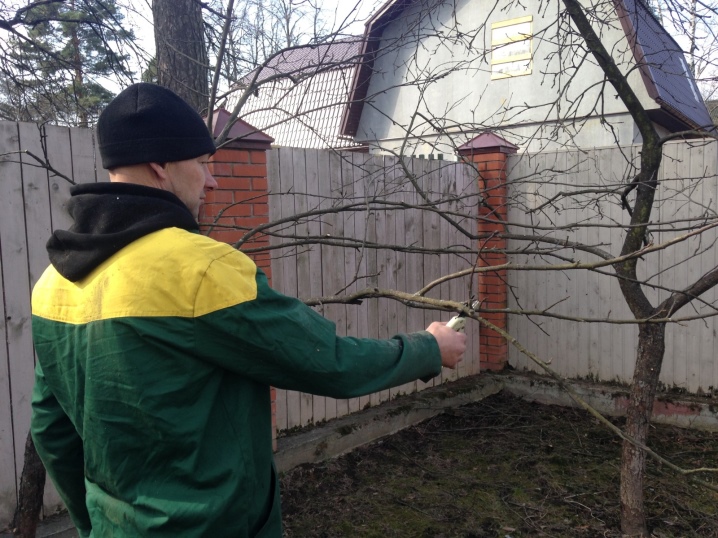
Views
Before the procedure, you need to understand all the nuances and rules for pruning stone fruit crops. Novice gardeners need to learn about the structure and structure of the crown, choose the necessary tools (pruning shears, saw or hacksaw, garden knife) and means for better healing of the cuts and damaged surfaces. Instruments must be sharp to avoid unnecessary bark damage and burrs.
For proper apricot pruning and crown formation, first inspect the entire tree and determine which branches seem clearly redundant and will interfere with harvesting. After trimming, you should get a beautiful silhouette of an apricot tree.
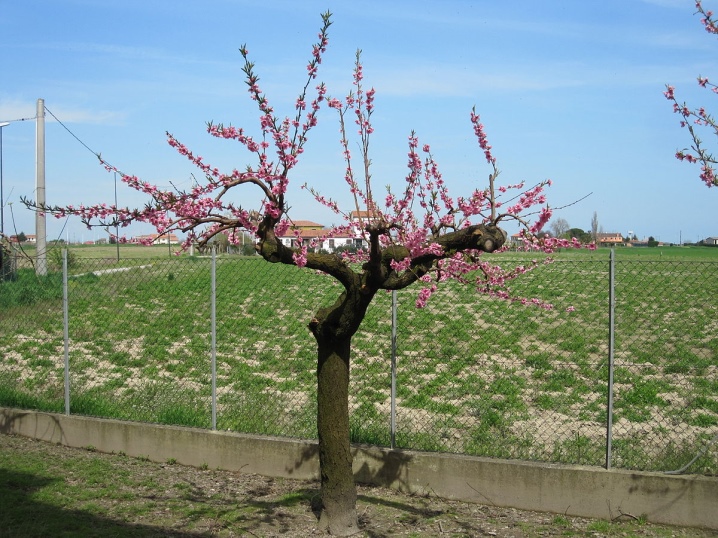
The tree should be evenly branched (with approximately equal number of branches on each side of the trunk). Only after a clearly defined plan, start work.
Spring pruning of stone fruit crops affects the correct formation of the crown of the tree (especially young) and fruiting. Given that the apricot retains all the ovaries, then pruning is necessary every spring. Otherwise, the yield will fall every year or become periodic.
The first pruning is carried out immediately upon planting the seedling (1-2 year old plant). Cut off the top of the main branch by about 3-4 buds. The height is left about 1 meter, it can be slightly lower. This is done so that the tree begins to form the side branches of the first lower tier. In the first year, it is important to form a strong skeleton for the crown.
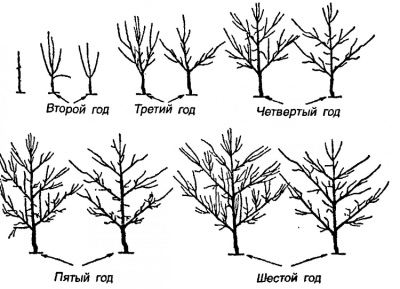
An adult tree is pruned to rejuvenate it, to allow air to circulate freely inside the crown. This is necessary for a good harvest and strengthening the immunity to fungal bacteria and pests.
The type of pruning will depend on the age of the apricot tree.
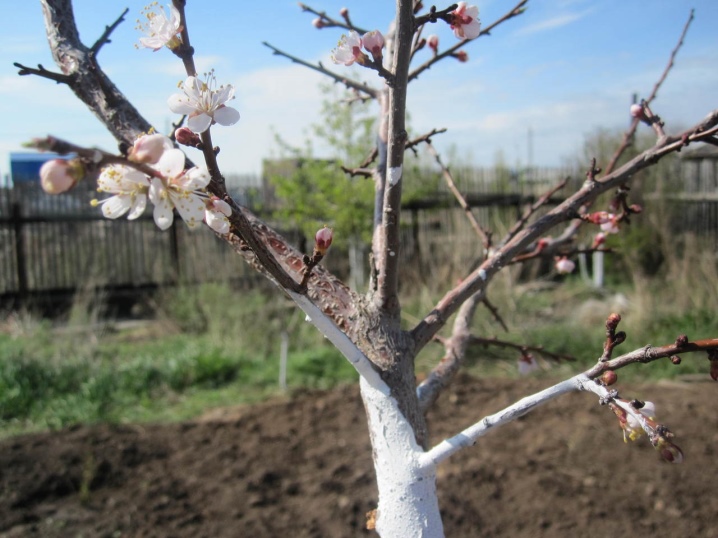
Formative
This type of pruning is needed for young trees during the growing season. This will help to form the correct and beautiful crown shape and create a strong skeleton of the tree.
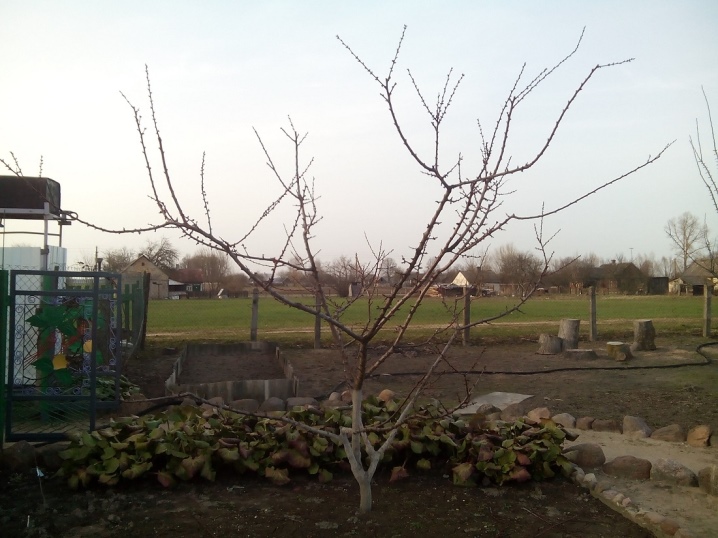
Regular
Regular pruning is done every year in mature trees. It is needed to regulate fruiting and increase the number of fruits. It also helps to improve air exchange inside the crown.
With this type of pruning, all intertwining branches and shoots are removed, which interfere with the flow of air and sunlight into the crown.
Branches that grow incorrectly (inward or downward) are removed.
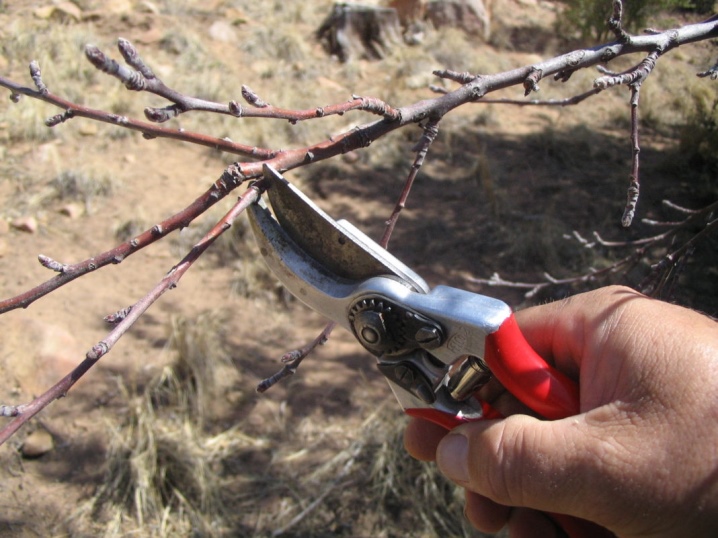
Rejuvenating
Such pruning is needed for old trees (as the name implies). Anti-aging pruning is done in stages every spring. Damaged and weakened branches are removed. Several large lower branches are cut down, older than 5 years. But this is done only once every 3-4 years.
According to the method of cutting, trimming is divided into 2 types.
Shortening, when not all of the branch is cut, but only "to the bud" (most often the branch is reduced by half or 1/3). This is necessary for a more intensive branching process and strengthening the skeleton.
Thinning is done to remove small shoots that create excessive shadow in the center of the crown. In this form, the shoots are cut completely "on the ring".
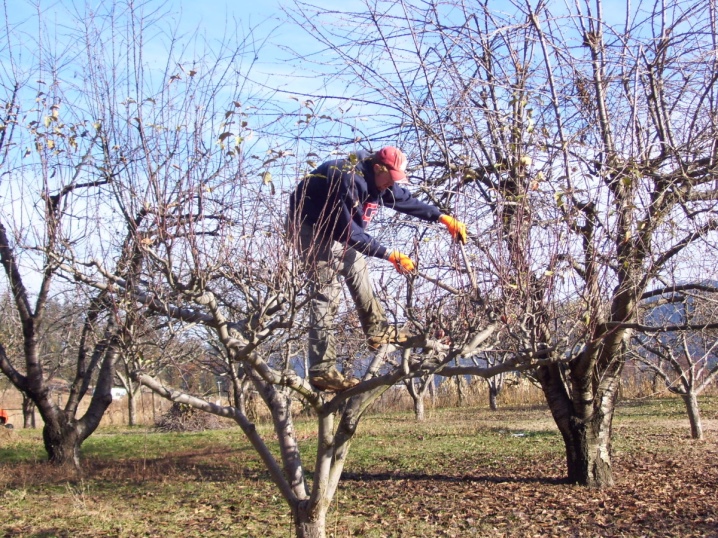
When pruning, remember to cut branches in a balanced way, do not get carried away. You can remove about 1 / 4-1 / 3 of the total. So the tree will have time to heal wounds on its own, and will give a good harvest. If you cut more branches, then the tree will give many new shoots that will not bear fruit, the harvest will turn out to be small. If you cut a little, then the harvest will be too large, and there will be a frequency of fruiting (that is, there will be no harvest for the next year).
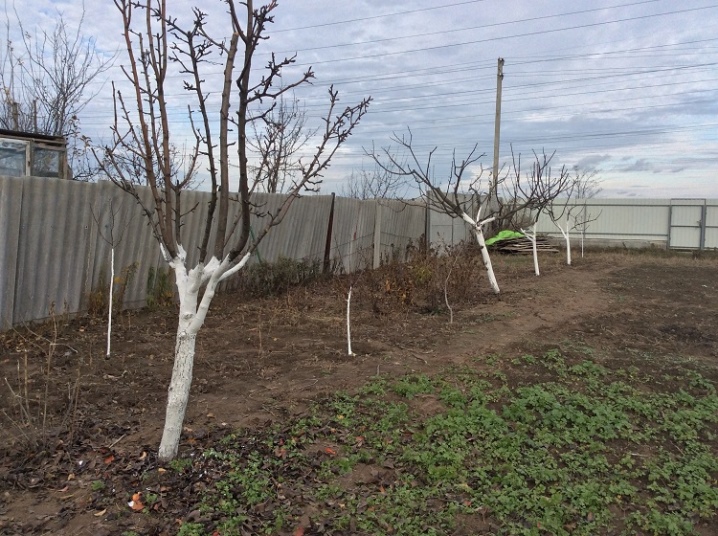
Be sure to process the slices after the end of the process. Through large wounds, pathogenic bacteria and fungal spores, as well as moisture, can enter the tree, then the decay process will begin. For processing, you can choose:
-
garden pitch;
-
special lubricants and pastes;
-
oil paint;
-
natural drying oil;
-
linseed oil;
-
ordinary brilliant green.


Sometimes a solution is made from equal parts of alcohol and iodine. Every gardener has his own secrets. Garden pitch and pastes are not used if the temperature has not risen above zero, +5 degrees, they can freeze and crack. If the cut is less than 2-3 cm in diameter, then it is not smeared.
Very large cuts are lubricated only at the edges. The most important thing is to process the cuts made "on the ring" on the skeleton of the tree.
Obviously, it is easier for a tree to heal small wounds. But it is better to make one large cut than many small ones, so that the tree will have enough nutrients for the ovary and the formation of large fruits.
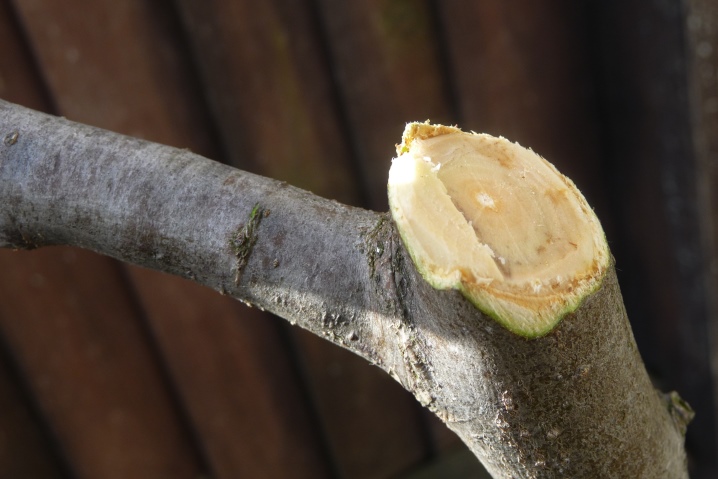
Schemes
Spring pruning is the main care for stone fruit crops. In central Russia, pruning is carried out in March-April, before the formation of buds and the beginning of sap flow. It is difficult to conduct it, especially for beginners. First you need to study the topic in detail, only then proceed to the case step by step.
The methods and details of pruning differ depending on its purpose and the age of the tree. If everything is done correctly, the tree will delight you with a stable harvest every year, and the apricots will be large with a rich taste.
The crown of the seedlings is cut, leaving 70-80 cm in height. Lateral small branches are cut off to form a strong skeleton of the crown.
Young branches grow quickly, but do not form enough branches to form a correct crown. To do this, they are pruned by a few centimeters - this is how new shoots will appear.

For 2 years, they continue to form the crown. For this, the top of the head is also cut a little, the side branches are shortened by 1/3 of the length. This is done to increase the fruiting branches. When pruning, make sure the branches are evenly distributed and their length. You need to cut the shoots "on the kidney" so that the branches go from it.
The procedure is repeated for 3 years. By this time, the skeleton of the tree has already formed, and the shape of the crown is clearly visible.If a columnar tree has more than 5 lateral branches, the extra branches must be removed. After that, it is necessary to shorten the lower large branches (leave about 60 cm from the trunk). Then form a crown by aligning the upper branches with the length of the lower ones. The length of the branches will be different, but from the side you will get a beautiful and even crown.
In the spring of an adult tree, dry and damaged branches must be removed. If necessary, shorten large lateral branches. This is done to avoid breaking during fruiting. Trim about 20-30 cm from the ends.
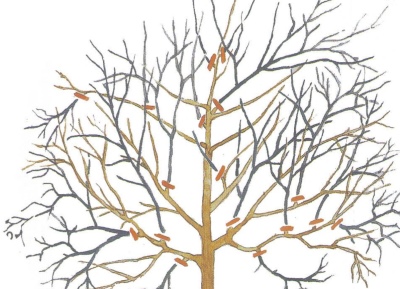
In old apricots, it is necessary to regulate the splendor and excessive thickening of the crown by removing the shoots growing inward. Broken, crooked and dried branches are also cut off. Be sure to cut off the top of the head by 30-40 cm to control growth.
The method of crown formation and the scheme depend on the cultivar, how tall and branched the tree can grow, and what the yield is. The shape of the crown is also selected depending on the region of cultivation.
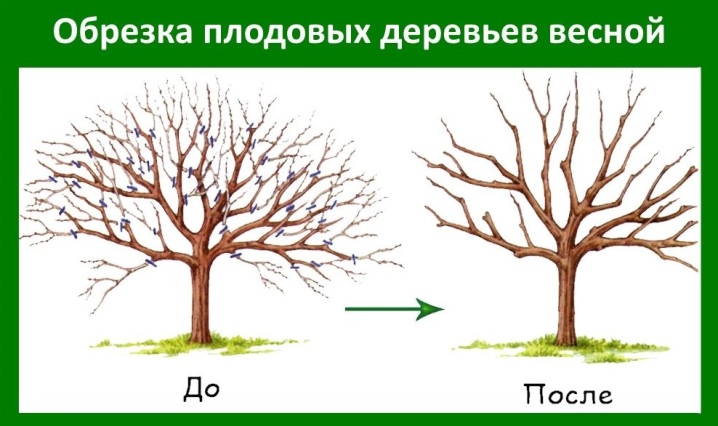
Sparse tiered
The sparse-tiered form is given in stages, during the first 4-5 years after planting the seedling. This is done gradually every year. In the first spring, 2 lateral branches with several shoots are left. The lower tier of branches is left at a height of about half a meter from the ground. Then, each year, the side branches are slightly shortened and new shoots are formed to thicken the crown. For 3-4 years, the second tier of lateral branches is formed. Make sure that the skeletal branches grow at an acute angle with respect to the conductor (main trunk). Thus, over the course of several years, the entire crown is formed, the distance between the tiers should be about 40-45 cm. This shape is suitable for the southern regions and the middle zone.

Bowl-shaped
The cup-shaped crown is more suitable for low-growing crops. This opens access to light and air inside the crown. This shape is suitable for more severe climates where summers are shorter. More light gets on the fruits, and they have time to ripen on the tree. The cup is formed in the first year of growth.
To do this, select 5 strong branches growing in different directions on the same tier, and the rest are cut off. In subsequent years, the lower tier is cut off 50 cm from the trunk.
And the upper shoots are formed in the form of a rosette branching. This is how a bowl-shaped crown is formed. The cup-shaped shape helps to increase yields and increase immunity in the tree due to good air exchange and unhindered sunlight.
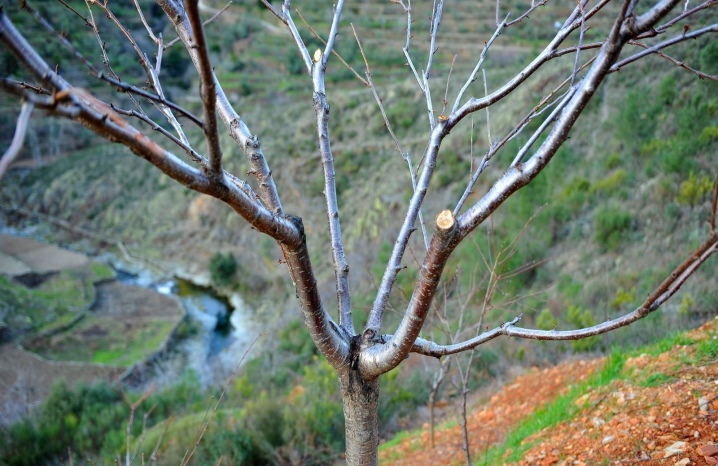
Leader
This is an arbitrary scheme in which the main side branches are distributed evenly throughout the trunk. At 5-6 years, the top of the conductor is cut off. The tree is moderately tall with an average crown density. When choosing the location and formation of side branches, the convenience of harvesting and caring for the apricot is taken into account.
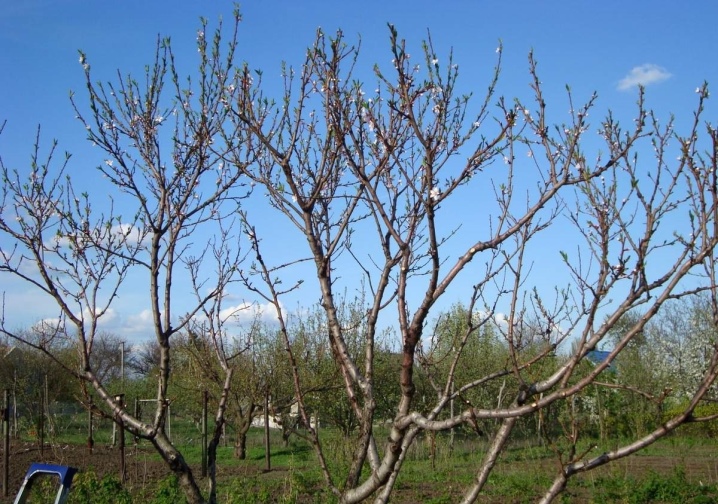
Flat
The flat shape is suitable for landscaping. Here the beauty and shape of the crown is more taken into account than the high yield and quality of the fruits. When the skeleton is formed, two lateral branches are left growing opposite each other. In subsequent years, the upper tiers are left in the same plane. The tree performs a decorative function; you should not count on a large harvest.

Transferring a branch to a side shoot
The method helps to change the direction of growth of the branch and make it fruitful. It is cut so that it stops growing upward. To do this, choose an shoot on a branch that grows in the desired direction (sideways), and cut off its end, growing above this shoot. Gradually, the branch will begin to change the direction of growth, will grow to the side, not up. After that, the shoot can be cut "to the bud" for the desired formation of the crown. The translation of the branch is done to correct the shape of the crown, its density and fruiting.
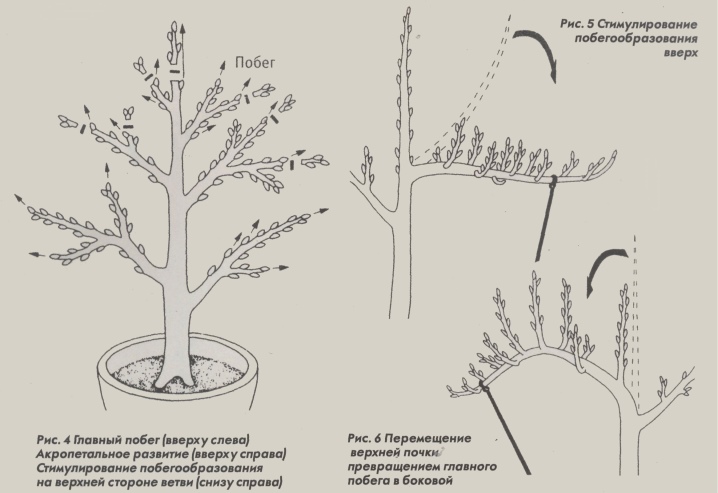
Spring pruning of apricot is a laborious process that requires certain skills and knowledge. But, following all the recommendations, rules and tips, even beginners will be able to form a beautiful, healthy tree with a constant high yield.Regular tree care is the key to a good harvest with large and sweet fruits. And correct and timely pruning guarantees a healthy, well-groomed tree from which it will be convenient to harvest.
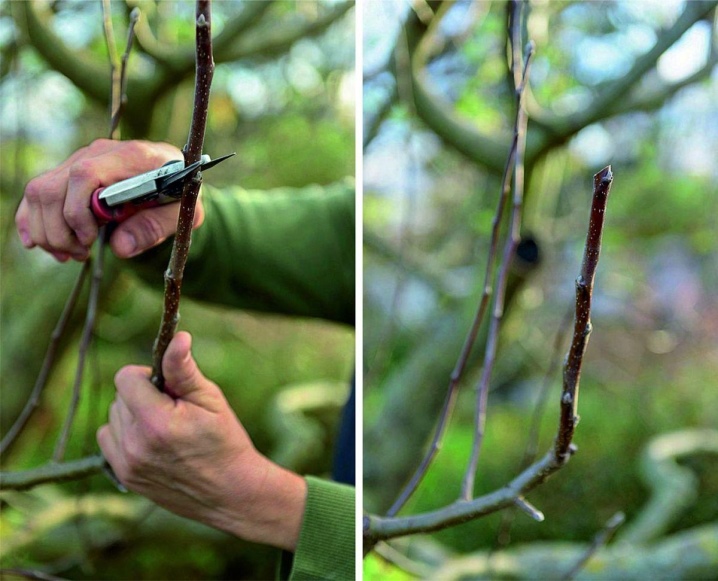






The comment was sent successfully.